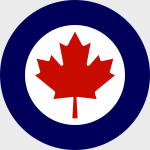Hobby Master HA3713 RCAF McDonnell CF-101 Voodoo Fighter - "Lynx One", 416 Squadron "City of Oshawa", CFB Chatham, New Brunswick, Canada (1:72 Scale)
"Television brought the brutality of war into the comfort of the living room. Vietnam was lost in the living rooms of America - not on the battlefields of Vietnam."
- Marshal McLuhan
 The McDonnell F-101 Voodoo was a supersonic military jet fighter which served the United States Air Force (USAF) and the Royal Canadian Air Force (RCAF). Initially designed by McDonnell Aircraft as a long-range bomber escort (known as a penetration fighter) for the Strategic Air Command (SAC), the Voodoo was instead developed as a nuclear-armed fighter-bomber for the Tactical Air Command (TAC), and as a photo reconnaissance aircraft based on the same airframe. Extensively modified versions were produced as an all-weather interceptor aircraft, serving with the Air Defense Command, later renamed the Aerospace Defense Command (ADC), the Air National Guard, the Royal Canadian Air Force and the unified Canadian Forces after 1968.
The McDonnell F-101 Voodoo was a supersonic military jet fighter which served the United States Air Force (USAF) and the Royal Canadian Air Force (RCAF). Initially designed by McDonnell Aircraft as a long-range bomber escort (known as a penetration fighter) for the Strategic Air Command (SAC), the Voodoo was instead developed as a nuclear-armed fighter-bomber for the Tactical Air Command (TAC), and as a photo reconnaissance aircraft based on the same airframe. Extensively modified versions were produced as an all-weather interceptor aircraft, serving with the Air Defense Command, later renamed the Aerospace Defense Command (ADC), the Air National Guard, the Royal Canadian Air Force and the unified Canadian Forces after 1968.
The Voodoo's career as a fighter-bomber was relatively brief, but the reconnaissance versions served for some time. Along with the US Air Force's U-2 and US Navy's RF-8 Crusaders, the RF-101 reconnaissance variant of the Voodoo was instrumental during the Cuban Missile Crisis and saw extensive service during the Vietnam War. Interceptor versions served with the Air National Guard until 1982, and in Canadian service they were a front line part of NORAD until their replacement with the McDonnell Douglas CF-18 Hornet in the 1980s.
While the Voodoo was a moderate success, it may have been more important as an evolutionary step towards its replacement in most roles, the McDonnell Douglas F-4 Phantom II, one of the most successful Western fighter designs of the 1960s. The Phantom would retain the twin engines, twin crew for interception duties, and a tail mounted well above and behind the jet exhaust. Both aircraft were influenced by the McDonnell's F-3 Demon, a carrier-based naval fighter-interceptor that served during the 1950s and early 1960s.
Pictured here is a 1:72 scale diecast replica of a RCAF McDonnell CF-101 Voodoo fighter that was attached to 416 Squadron.
Sold Out!
Dimensions:
Wingspan: 6-3/4-inches
Length: 11-1/4-inches
Release Date: January 2017
Historical Account: "City of Oshawa" - 416 "City of Oshawa" Tactical Fighter Squadron (416 TFS) was a unit of the Canadian Forces under Royal Canadian Air Force. The squadron operated the CF-18 Hornet fighter jet from CFB Cold Lake in Alberta, Canada. In 2006, 416 TFS stood down and was amalgamated with 441 Tactical Fighter Squadron to form 409 Tactical Fighter Squadron. The unit was originally formed during the Second World War as a unit of the Royal Canadian Air Force (RCAF).
In 1970, the USAF agreed to exchange 58 CF-101s and to supply Canada with 66 ex-USAF F-101s. One of these aircraft was s/n 57-0380 and became CF-101 s/n 101043. The aircraft spent most of its time with the 416 Lynx Squadron in Chatham, New Brunswick. In 1984, this aircraft was given a special paint scheme, "Lynx One" to celebrate the 60th Anniversary of the Canadian Air Force and the end of the Voodoo in Canada. The aircraft is on display at the Atlantic Canada Aviation Museum, Halifax.







